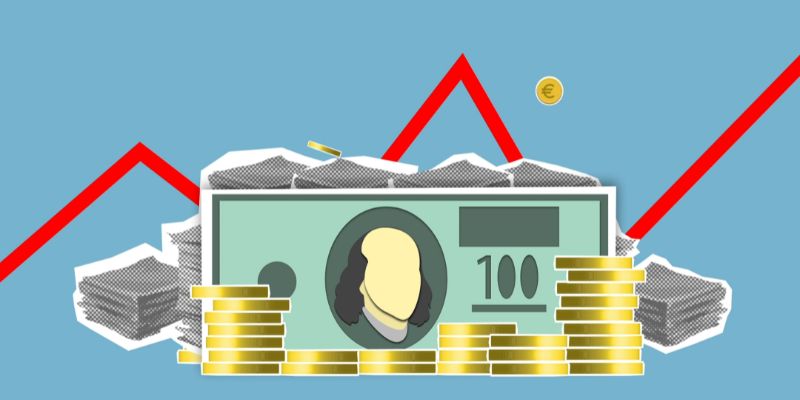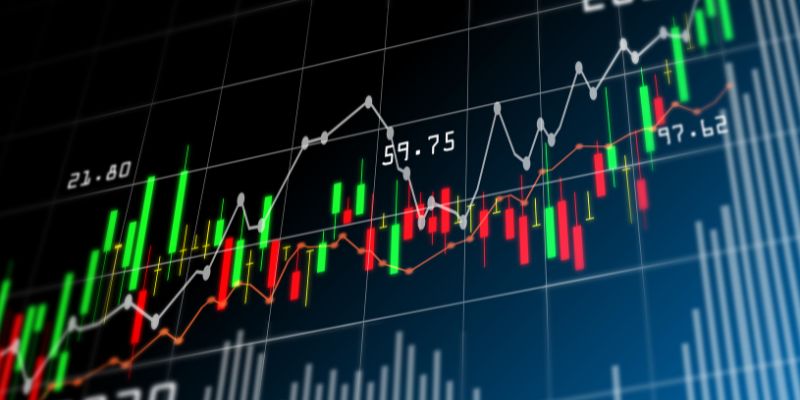Paying an Annual Fee for a Credit Card
In a word, provided that the additional advantages of carrying the card outweigh the costs associated with doing so.
Triston Martin
Sep 29, 2022
There are two market indexes for viewing market index performance numbers, capitalization-weighted indexes like S&''P 500 index (SPX) and price-weighted indexes such as Dow Jones Industrial Average (DIJA).
Cap-weighted index performance drove by the movement of present holdings and multiplied by their allocated market cap. In contrast, Dow Jones Industrial Average is a price-weighted index, implying that the highest price share holds the greatest weight in the index.
DIJA was introduced in 1896 by Charles Dow; it reflects the average stock prices of the 30 most prominent companies on the USA stock exchange. It also comes under criticism due to the limited number of companies. At the time of DJIA's introduction, investors were unaware of the idea of stocks; they relied on bonds as a typical form of investment.

At the time of Dow jones's introduction, bonds were the typical type of investment that investors do. Still, Charles Dow introduced the concept of stocks and provided a simpler formula of DJIA, which gives the average of best-performing stocks. Initially, the index contained 12 companies, and their average is calculated by adding all the stocks and dividing by 12.
But now it contains 30 companies; the higher priced stock has a greater impact on the Dow's value than lower priced stock due to its index price-weighted nature. The representatives pick these companies from S&''P, DOW Indexes, and two representatives from the wall street journal.
In the past, the Dow average value was calculated by adding all companies' stocks and dividing them by the total number of companies. Still, many companies were added and removed from the stock over the years due to their performance. These changes impacted the prices of stocks and index value; it's impossible to do a historical comparison of Dow's current value verse the past years.

To maintain the value of the index in context to historical events, Dow Divisor was created that adjusted the total number of companies in the index to stock splits and reverse splits; usually, they affect the per share price. These adjustments in the Dow Divisor led to modify its value from 16.67 in 2018 to 0.152 at the end of 2020, or it can also be described as a $1 price move in the Dow component equal to a 6.8 point move in the Dow Index.
Some critics think the price-weighted index or divisor is outdated and thus lacks credibility. Still, despite all these factors, Dow is widely used by market participants and media to measure the overall market performance.
There are different methods to invest in DJIA; you can invest via index funds and derivatives like opinion contracts and future contracts.
The Dow is regarded as the few equity indices that show the performance of the US stock market; it is also used to measure and understand the latest happenings in the US market and how well it is performing. Its comparison to other common stock indexes is as follows:
S&''P 500 is the largest index that tracks the 500 largest public companies; S&''P 500 scope is much broader than the DJIA. As compared to DJIA, it is market capitalization-weighted; it is more diverse and includes companies on their market cap; whereas DJIA is price-weighted, S&''P 500 is a far better indicator of overall market stocks performance.
The price weight age factor makes the DJIA more volatile compared to market cap weightage like in S&''P 500 in the short term. Price drops in a few percentages impact the share prices of companies with small caps but expensive shares. But in the long term, both the indexes performed almost the same; from 1920 to 2020, DJIA had an annual return of 10.1%, whereas S&''P 500 stood at 10.3%.
The NASDAQ 100 comprises the 100 largest and most active traded stocks; these are non-financial domestic and international stocks traded on the NASDAQ stock market. The NASDAQ 100 also uses the cap-weighted formula, and requirements like maintaining a minimum daily trading volume of 100000 shares are traded on NASDAQ for a minimum of two years.
The NASDAQ 100 mostly contains technology-focused companies; it may not reveal the overall stock market situation but tell about the economic performance of the global tech industry. For the last 10 years, the NASDAQ has posted average returns of 42.6% compared to DJIA, averaging 12.3%; the difference in the average is due to the presence of tech stocks; NASDAQ holds the largest amount of tech stocks than any other index.
DJIA is one indicator that tells about the overall position of the US economy due to its components in the biggest public companies. Many investors are compelled toward index funds based on the Dow.
Purchase of a single share of the DJIA index fund can expose your portfolio to all 30 companies in the Dow components. It exposes companies with a proven track record of returns and solid business practices.
In the opinion of many critics, DJIA is not a significant indicator to measure the US economy; due to the limited number of companies in the index, it represents a small chunk; S&''P 500 is a larger and much broader index fund and is a better representation of the economy as it includes 500 companies compared to 30 companies in the DJIA.
The critics also believe that calculating and evaluating the company's stock price is not an accurate representation of it compared to its market cap. They imply that a company with less market cap but a high stock price is not equal to a company with a smaller stock price and large market cap.
DJIA, also known as Dow 30, is a stock market index with 30 large public companies trading on the New York stock exchange. It's a good addition to your investment portfolio and provides good short-term returns.
The price-weighted factor of DJIA is because it introduces the concepts of stock, and to attract investors, it kept that way, but with time it proves that it is no lesser than other types of indexes.
Paying an Annual Fee for a Credit Card
In a word, provided that the additional advantages of carrying the card outweigh the costs associated with doing so.
Top Applications For Budgeting, Saving, And Intelligent Spending
Top financial apps for budgeting, saving, and smart spending: Mint, YNAB, Personal Capital, Digit, Qapital, Acorns, Clarity Money, Robinhood, and Level Money. Each app offers unique features to help manage finances, track spending, set savings goals, and make smart spending decisions.
T. Rowe Price Review in 2022
With T. Rowe Price, you have a wide variety of investment opportunities. In particular, the company's no-load mutual funds have become quite popular.
Why Is the Dow Jones Industrial Average (DJIA) Price Weighted?: An Overview
To attract investors and to make it simple to understand the concept of stocks in the beginning, DJIA is kept price-weighted



